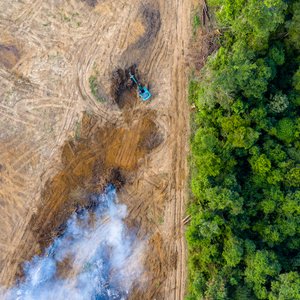The fish was bled and refrigerated immediately after being caught. This is decisive for good quality. Photo: Tor H. Evensen©Nofima.
It's not only farmed salmon that eat salmon feed. Saithe and other wild fish that search for food in the ocean can be tempted to enjoy an easy meal outside the salmon cage. Here, some of the feed that is fed to the farmed fish gets through the net wall with the water currents and is an easy catch for hungry wild fish.
Some saithe have made this into their speciality. This has been documented by way of a research project, where scientists have systematically caught and tested the quality of saithe near fish farms over a period of three years. On average, about every other saithe caught near a salmon farm had eaten salmon feed, and among them feed pellets accounted for between 78 and 100 percent of the stomach content.
Scientists from Nofima, the Norwegian Institute for Nature Research (NINA) and the Institute of Marine Research have been engaged in the project. They found that there was little negative effect on the quality of saithe caught in close vicinity to a fish farm compared to control fish caught a good distance away from such an installation, but they also found that, by and large, saithe that lived mainly on salmon feed were predominantly of a good quality.
Yet at the same time some claim that the fish have been spoiled and are inedible, and the fishermen report that the quality of catches near fish farms is poor.
"Our results don’t support these claims", says Bjørn-Steinar Sæther, Senior Scientist and project manager from the food research institute Nofima.
This is what the scientists tested
The scientists used nets near farms at Hitra and Ryfylke on the west coast of Norway, at different times of the year and over a period of three years. At the same time, they fished in control areas at a distance from the plants where the fish were hardly affected by the farming activities. Thus, the samples consisted of wild-caught saithe that had consumed salmon feed, and saithe that had not. Fat tests taken of saithe liver and muscle showed that fish close to the plants had been eating salmon feed for some time.
The fish were processed in accordance with the “Regulations governing fish and fisheries products” from being caught to refrigeration, before the scientists assessed the quality of fillets of saithe that had eaten salmon feed and saithe that had not. Quality parameters, such as colour, odour, consistency and muscle tissue were measured.
A stomach that is full of food can visually give a bad impression when the fish is gutted, but generally, the technical quality of fillets from both fish groups was good. The researchers found a slight difference in the quality of the fillets, inasmuch as saithe that had eaten pellets were softer and tended to show more gaping between muscle segments. This is also common in wild fish that naturally eat excessively in periods with good access to food.
However, the differences in quality were small and not critically important with regard to the processing and consumption of the fish.
In the project, the research institute NINA also evaluated the taste of the fish from the catches. In two separate taste tests, the majority of the test group (74 and 91% of them) were of the opinion that there was a difference in taste between wild-caught saithe that had eaten salmon feed compared with saithe that had not. However, there was no difference in what they liked best in the first test when they were served saithe cakes. But in the second test, when they were served oven-baked fillet, most preferred the fish that had eaten salmon feed.
"Thus, we can both measure and observe a difference, but in terms of what is best to eat, it’s all a matter of consumer preferences. In our test, saithe with salmon feed came out best", said Sæther.
"This indicates that there is less difference in quality than what seems to be the general impression", Sæther concluded.







